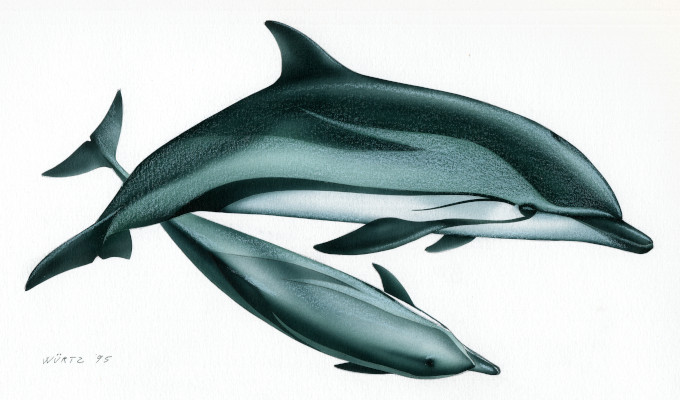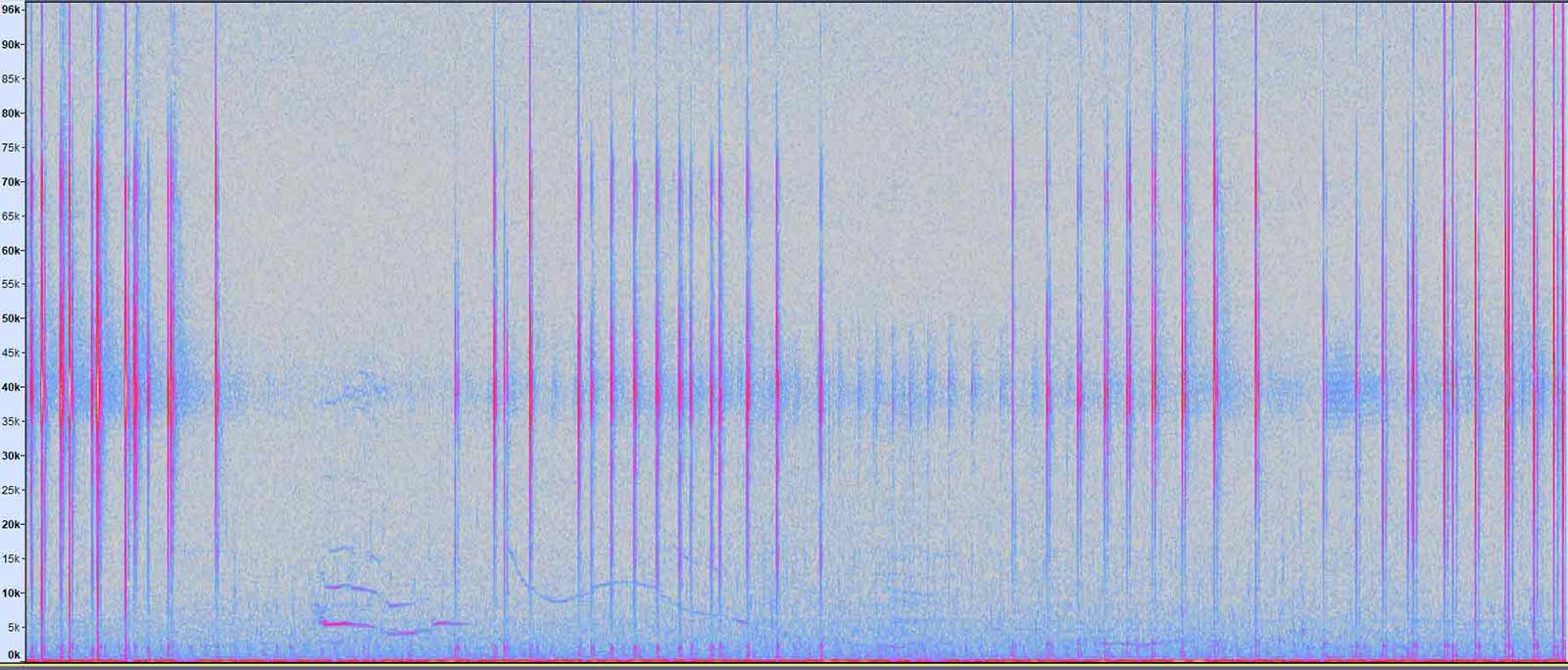Striped dolphin
Kingdom: Animalia
Phylum: Chordata
Class: Mammalia
Order: Cetartiodactyla
Infraorder: Cetacea
Parvorder: Odontoceti
Family: Delphinidae
Genus: Stenella
Species: Stenella coeruleoalba (Meyen 1833)

Description
The adult striped dolphin reaches an average length of 2.2 meters and a weight of 80-100 kg. The male is slightly larger than the female. Rostrum long and tapered, teeth sharp and small, body slender and siluriform, dorsal fin small and falcate, pectoral fins tapered. Like the common dolphin, the striped dolphin's livery is indicative of species recognition. Coloration is variable, back grayish brown or dark blue, belly white.

A narrow dark band runs along the sides, starting from a spot around the eye and ending by widening around the anal opening; another thinner band starts from the eye and ends at the base of the pectoral fin; a third band forms from the dorsal fin forward. The striped dolphin is a fast swimmer, often with huge jumps out of the water.
The striped dolphin is a cosmopolitan species distributed in temperate and tropical waters.
The striped dolphin lives in groups that range from twenty to a hundred individuals. In the Mediterranean, where it reproduces during the summer, it is the most common species. It feeds on bluefish and squid, revealing a certain food opportunism.
Mediterranean Conservation Status
In 2021, the Mediterranean subpopulation of striped dolphins moved from the vulnerable category to Least Concern on the IUCN Red List.

The Mediterranean subpopulation of striped dolphins is subject to several threats that, cumulatively, have reduced its size and slowed its recovery.
Between 1990 and 1992, a morbillivirus outbreak killed thousands of specimens, reducing the size of the groups to less than one-third of previous levels. Pollution (PCBs and other organochlorines) has been identified as a factor causing immunosuppression and sterility. Other significant threats include bycatches in fishing gear and the decrease in resources (prey) due to intense fishing exploitation.
Listed in
CMS App. II (popolazioni del Mediterraneo e del Pacifico tropicale orientale).
CITES App. II
Bern Convention App. II
Convenzione di Barcellona, Protocollo SPA/BD, Allegato II
EU Habitats Directive: Allegato IV
Global status
Least Concern
The local population
Every year, large groups of striped dolphins consisting of up to 100 or more individuals can be seen off the island of Ischia in the Cuma canyon area.
In our study area, striped dolphins are often sighted in association with common dolphins.

Feeding, socialization, and breeding behaviors are observed for both species. Newborns are spotted in July, August, and September.
Our data showed a relevant overlap in distribution between common and striped dolphins suggesting the possible existence of antagonism between the species in habitat use.

Stenella is the most frequently sighted species during our observations and the most abundant in the study area. Sightings occur throughout the year.
Stenella is distributed throughout the study area, both in coastal waters and further offshore in pelagic waters. However, the species tends to concentrate in areas northwest and southwest of the island of Ischia, corresponding to the canyons of Cuma and Punta Imperatore.
Acoustics
Striped dolphins produce high-frequency whistles extending from a few Hz to more than 20 kHz, often lasting less than a minute. Striped dolphin clicks have energy peaks from 50 to 150 kHz.

Spectrogram of clicks and whistles of striped dolphin
The other vocalizations of the species are highly varied but poorly studied. Preliminary analyses of whistles (n whistles 209, n samples 5696) recorded in the study area show mean duration values of 0.35 s, range 0.12-0.9, DS ±0.2, and mean frequency values of 9262 Hz, range 4823-18561 Hz, DS ±2218.

